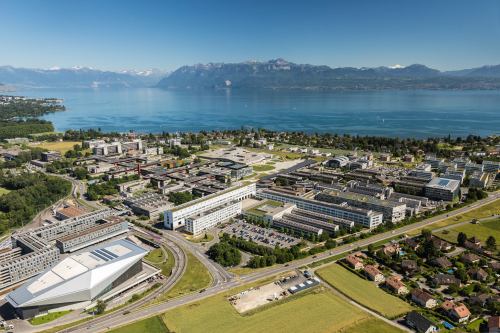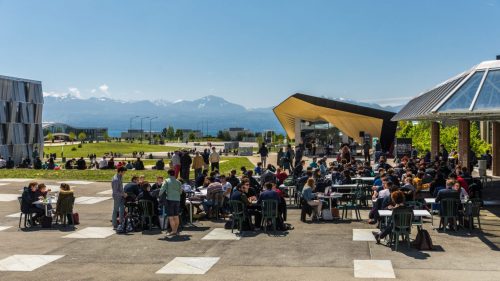Should developing countries seek to manufacture their own robotics solutions in order to establish payload delivery services? What business models make the most sense to sustain these services? Do decision-support tools already exist to determine which delivery routes are best served by aerial robots (drones) rather than traditional systems (such as motorbikes)? And what mechanisms should be in place to ensure that the impact of robotics solutions on local employment is one of net job creation rather than job loss?

There are some of the questions I’ve been thinking about and discussing with various colleagues over the past year vis-a-vis humanitarian applications. So let me take the first 2 questions and explore these further here. I’ll plan on writing a follow up post in the near future to address the other two questions.
First, should developing countries take advantage of commercial solutions that already exist to build their robotics delivery infrastructure? Or should they seek instead to manufacture these robotics platforms locally instead? The way I see it, this does not have to be an either/or situation. Developing countries can both benefit from the robust robotics technologies that already exist and take steps to manufacture their own solutions over time.
This is not a hypothetical debate. I’ve spent the past few months going back and forth with a government official in a developing country about this very question. The official is not interested in leveraging existing commercial solutions from the West. As he rightly notes, there are many bright engineers in-country who are able and willing to build these robotics solutions locally.
Here’s the rub, however, this official has no idea just how much work, time and money is needed to develop robust, reliable and safe robotics solutions. In fact, many companies in both Europe and the US have themselves completely under-estimated just how technically challenging (and very expensive) it is to develop reliable aerial robotics solutions to delivery payloads. This endeavor easily takes years and millions of dollars to have a shot at success. It is far from trivial.
The government official in question wants his country’s engineers to build these solutions locally in order to transport essential medicines and vaccines between health clinics and remote villages. Providing this service is relatively urgent because existing delivery mechanisms are slow, unreliable and at times danger-ous. So this official will have to raise a substantial amount of funds to pay local engineers to build home-grown robotics solutions and iterate accordingly. This could take years (with absolutely no guarantee of success mind you).
On the other hand, this same official could decide to welcome the use of existing commercial solutions as part of field-tests in-country. The funding for this would not have to come from the government and the platforms could be field-tested as early as this summer. Not only would this provide local engineers with the ability to learn from the tests and gain important engineering insights, they could also be hired to actually operate the cargo delivery services over the long-term, thus gaining the skills to maintain and fix the platforms. Learning by doing would give these engineers practical training that they could use to build their own home-grown solutions.
One could be even more provocative: Why invest so much time and effort in local manufacturing when in-country engineers and entrepreneurs could simply use commercial solutions that already exist to make money sooner rather than later by providing robotics as a service? We’ve seen, historically, the transition from manufacturing to service-based economies. There’s plenty of profit to be made from the latter with a lot less start-up time and capital required. And again, one strategy does not preclude the other, so why forgo both early training and business opportunities when these same opportunities could help develop and fund the local robotics industry?
Admittedly, I’m somewhat surprised by the official’s zero tolerance for the use of foreign commercial technology to improve his country’s public health services; that same official is using computers, phones, cars, televisions, etc., that are certainly not made in-country. He does not have a background in robotics, so perhaps he assumes that building robust robotics solutions is relatively easy. Simply perusing the past 2 years of crowdfunded aerial robotics projects will clearly demonstrate that most have resulted in complete failure despite raising millions of dollars. That robotics graveyard keeps growing.
But I fully respect the government official’s position even if I disagree with it. In my most recent exchange with said official, I politely re-iterated that one strategy (local manufacturing) does not preclude the other (local business opportunities around robotics as service using foreign commercial solutions). Surely, the country in question can both leverage foreign technology while also building a local manufacturing base to produce their own robotics solutions.

Second, on business models, which models can provide sustainability by having aerial delivery services be profitable earlier rather than later? I was recently speaking to a good colleague of mine who works for a very well-respected humanitarian group about their plans to pilot the use of aerial robotics for the delivery of essential medicines. When I asked him about his organization’s business model for sustaining these delivery services, he simply said there was no model, that his humanitarian organization would simply foot the bill.
Surely we can do better. Just think how absurd it would be for a humanitarian organization to pay for their own 50 kilometer paved road to transport essential medicines by truck and decide not to recoup those major costs. You’ve paid for a perfectly good road that only gets used a few times a day by your organization. But 80% of the time there is no one else on that road. That would be absurd. Humanitarians who seek to embark on robotics delivery projects should really take the time to understand local demand for transportation services and use-cases to explore strategies to recoup part of their investments in building the aerial robotics infrastructure.
Surely remote communities who are disconnected from health services are also disconnected from access to other commodities. Of course, these local villages may not benefit from high levels of income; but I’m not suggesting that we look for high margins of return. Point is, if you’ve already purchased an aerial robot (drone) and it spends 80% of its time on the ground, then talk about a missed opportunity. Take commercial aviation as an analogy. Airlines do not make money when their planes are parked at the gate. They make money when said planes fly from point A to point B. The more they fly, the more they transport, the more they profit. So pray tell what is the point of investing in aerial robots only to have them spend most of their lives on the ground? Why not “charter” these robots for other purposes when they’re not busy flying medicines?
The fixed costs are the biggest hurdle with respect to aerial robotics, not the variable costs. Autonomous flights themselves cost virtually nothing; only 1-2 person’s time to operate the robot and swap batteries & payloads. Just like their big sisters (manually piloted aircraft), aerial robots should be spending the bulk of their time in the sky. So humanitarian organizations really ought to be thinking earlier rather than later about how to recoup part of their fixed costs by offering to transport other high-demand goods. For example, by allowing local businesses to use existing robotics aircraft and routes to transport top-up cards or SIM cards for mobile phones. What is the weight of 500 top-up or SIM cards? Around 0.5kg, which is easily transportable via aerial robot. Better yet, identify perishable commodities with a short shelf-life and allow business to fly those via aerial robot.
The business model that I’m most interested in at the moment is a “Per Flight Savings” model. One reason to introduce robotics solutions is to save on costs—variable costs in particular. Lest say that the variable cost of operating robotics solutions is 20% lower than the costs of traditional delivery mechanisms (per flight versus per drive, for example). You offer the client a 10% cost saving and pocket the other 10% as revenue. Over time, with sufficient flights (transactions) and growing demand, you break even and start to create a profit. I realize this is a hugely simplistic description; but this need not be unnecessarily complicated either. The key will obviously be the level of demand for these transactions.
The way I see it, regardless of the business model, there will be a huge first-mover advantage in developing countries given the massive barriers to entry. Said barriers are primarily due to regulatory issues and air traffic management challenges. For example, once a robotics company manages to get regulatory approval and specific flight permissions for designated delivery routes to supply essential medicines, a second company that seeks to enter the market may face even greater barriers. Why? Because managing aerial robotics platforms from one company and segregating that airspace from manned aircraft can already be a challenge (not to mention a source of concern for Civil Aviation Authorities).
So adding new (and different types of) robots from a second company requires new communication protocols between the different robotics platforms operated by the 2 different companies. In sum, the challenges become more complex more quickly as new competitors seek entry. And for an Aviation Authority that may already be weary of flying robots, the proposal of adding a second fleet from a different company in order to increase competition around aerial deliveries may take said Authority some time to digest. Of course, if these companies can each operate in completely different parts of a given country, then technically this is an easier challenge to manage (and less anxiety provoking for authorities).
But said barriers do not only include technical (though surmountable) barriers. They also include identifying those (few?) use-cases that clearly make the most business sense to recoup one’s investments earlier rather than later given the very high start-up fixed costs associated with developing robotics platforms. Identifying these business cases is typically not something that’s easily done remotely. A considerable amount of time and effort must be spent on-site to identify and meet possible stakeholders in order to brainstorm and discover key use-cases. And my sense is that aerial robots often need to be designed to meet a specific use-case. So even when new use-cases are identified, there may still be the need for Research and Development (R&D) to modify a given robotics platform so it can most efficiently cater to new use-cases.
There are other business models worth thinking through for related services, such as those around the provision of battery-charging services, for example. The group Mobisol has installed solar home systems on the roofs of over 40,000 households in Rwanda and Tanzania to tackle the challenge of energy poverty. Mobisol claims to already cover much of Tanzania with solar panels that are no more than 5 kilometers apart. This could enabling aerial robots (UAVs) to hop from recharging station to recharging station, an opportunity that Mobisol is already actively exploring. Practical challenges aside, this network of charging stations could lead to an interesting business model around the provision of aerial robotics services.
As the astute reader will have gathered, much of the above is simply a written transcript me thinking out load. So I’d very much welcome some intellectual company here along with constructive feedback. What am I missing? Is my logic sound? What else should I be taking into account?


























